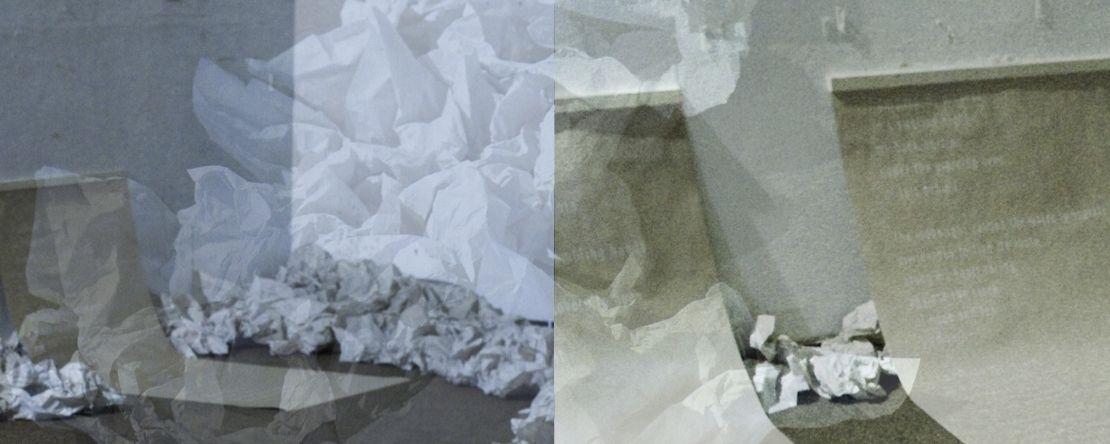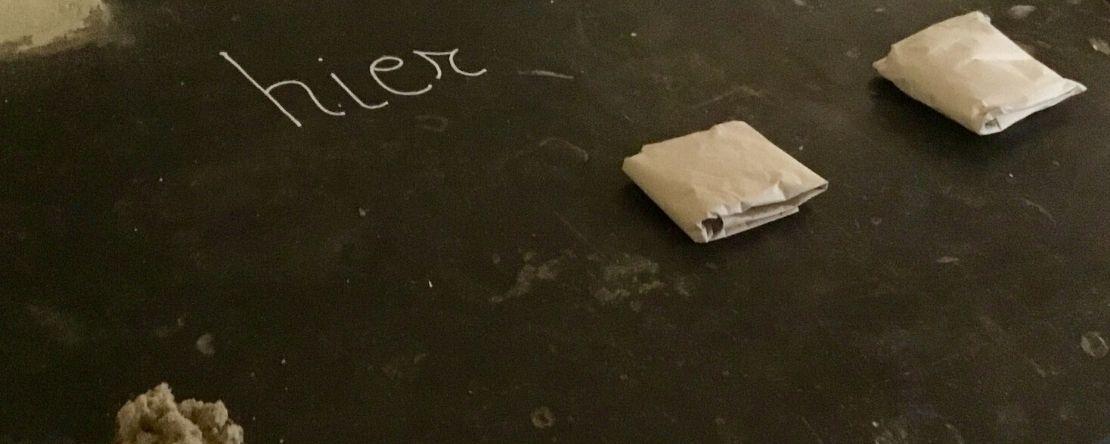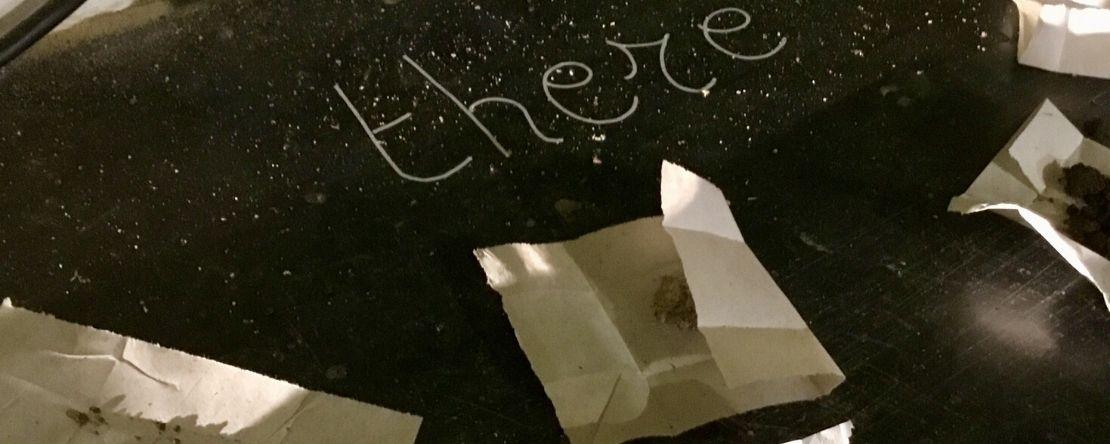- [:swvar:option:104:] [:swvar:option:103:], [:swvar:option:105:]
- Category: poetry
WEG/aWAY +1 year (2)
Room 2: sand room - Reflections about how the poetry originated and how the installation was developed

Ghent - 21 July 2020
Sabine A.M Martens
WEG/aWAY
+ 1 year (2)
Sand room
Why it must. Sand room (2)
Sometimes you don’t have a choice because of what stirs up your inner self. Last night again on the news (spring 2019) how more than 400 people packed together on a boat capsize in the Mediterranean Sea. More than 200 corpses are found. They come from Africa. Earlier I saw the news of boat refugees who tried to get ashore in Italy. They arrive in Lampedusa in the middle of the night. They are subjected to the searchlight. They are not welcome. I recall I found the color of the images very black and the lights made me feel scared. Some months later I see a documentary about a large ship that docks in Italy. Hundreds of dead bodies are lying in the cargo space. It takes ages to identify them.
What drives a person to leave everything behind without knowing what’s ahead? The only answer I can come up with is despair and bewilderment, the biological predominance to survive. It is as old as mankind. This internal force to survive can hardly be seen as something negative. It is only a drift of life not originating from profit or power. And still, the world is in protest because of it. The migrants of the past centuries aren’t all willing to act with empathy towards the migrants of this era.
The television images and intolerance of my own region force my hand to write three poems for what I will call the sand room. I try to capture the journey of somebody leaving native soil in search of a better life, of someone who leaves everything behind without knowing what lies ahead.
I ask various people to bring sand from different countries and to hand it over to me. That gesture is almost mystical to me. The sand has traveled along a path and goes from hand to hand. During the building up of the exhibition space, I take sand from the garden at Lindenlei 38. The different packets of sand are the here and there but in the installation they actually all are the here.
I receive sand from different continents and during the preparatory phase, I am working on a soundscape with an extremely talented Congolese singer - an experience that profoundly enriches me. To me, there is no here and there, to me there is no we and them.
A few months before the opening of my exhibition the region in which I live shows itself from its frustrated side. Parties with a clear antimigration program win the elections. It disgusts me in such a way that I consider moving.
Without an explanation of this background visitors of the sand room not necessarily see a migration theme. They see childhood and a story on the past, present, and future; they see a reflection of a person about the own self, a look inward. They see a universal person who - maybe - could be at home everywhere.




